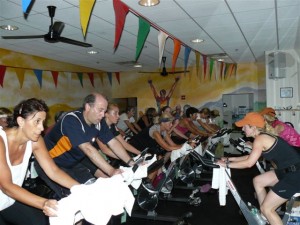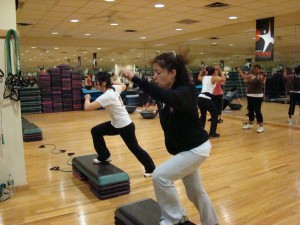by Michelle Sutton-Kerchner
Anxiety often visits this time of year. Back -to-school jitters (for the kids or you), year-end budget tweaking, or seasonal lifestyle changes are typical triggers. Put this nervous energy to use rather than have it sabotage the upcoming weeks …
We all have periods of anxiety. It’s one of life’s natural, although uncomfortable, emotions. Perhaps you need to ask for a pay raise, confront your mother-in-law, or face a personal issue. Anxiety often propels us to step outside our emotional comfort zone and tackle a situation in hopes of a beneficial outcome.
However, for some, anxiety is an ongoing struggle that interferes with everyday activities and affects overall health. Historically, such anxieties were shrugged off as stress or personality type (remember Nervous Nelly?). Today, we acknowledge these as actual conditions requiring real treatment. Recognizing this allows the positive energy associated with a healthy “case of nerves” to work for you. It also leads to proper treatment, which squelches associated chronic symptoms.
ID the Anxiety
There are several forms of clinical anxiety, the most prominent being panic attacks, obsessive-compulsive disorder (OCD), and post-traumatic stress disorder (PTSD) .
Panic attacks are sudden and severe. Some mistake them as a cardiac event or other life-threatening episode. The rapid heartbeat, hyperventilation, dizziness, nausea, and trembling associated with a panic attack should be immediately investigated to confirm an accurate diagnosis. Perhaps your physician will perform diagnostic tests to eliminate other serious health problems as the cause. This episode of intense fear may last up to thirty minutes, and initiates without cause. It’s a fight-or-flight response without a trigger of danger.
Having multiple panic attacks, or living in fear of experiencing another one, is considered panic disorder. Although there is no way to prevent future attacks, making lifestyle adjustments that include stress-relief and relaxation techniques are ideal preventative measures.
Obsessive-compulsive disorder (OCD) is thought to have genetic links and tends to run in families. This ongoing condition varies in severity, often exacerbated by major life changes, such as beginning a new job, having a baby, or starting/returning to school. The anxiety and stress associated with these new situations may trigger symptoms, which include unreasonable thoughts and fears (obsessions) that compel the sufferer to engage in repetitive behaviors (compulsions). S/he becomes powerless to these fearful thoughts and urges, despite realizing their irrationality.
Often, television and movies present exaggerated examples of this disorder, and in a comical light. Hoarders, the OCD detective, and insane portrayals of therapy sessions make light of the situation. However, a person under the influence of this obsessive-compulsion is closer to tears than laughter. The need to repeat an activity or collect random objects can interfere with the simple function of coexisting.
Perfectionism shouldn’t be confused with OCD. Many people like things a certain way and keep a super-spotless home. However, repeated cleaning of specific things (e.g., hands or floors) as a time-consuming task that rules your daily life signals OCD.
Post-traumatic stress disorder (PTSD) typically occurs within three months of experiencing a tragic event or situation, such as combat exposure, rape, or violent assault. It also can be the result of childhood abuse, and not surface until years later.
Anyone who experiences a traumatic scenario needs time to cope and overcome it. However, with PTSD, the individual is consumed by intrusive flashbacks and vacillates between emotional numbness and hyper-arousal.
This condition tends to impact physical health more than others. Volatile, pent-up emotions can lead to cardiovascular disease, chronic pain, autoimmune disease, and musculoskeletal conditions. It may also place the PTSD patient at higher risk for other mental health disorders, such as alcohol/drug abuse, eating disorders, and suicidal thoughts.
Generalized anxiety disorder is defined by a chronic state of worry. Although the worry is often over legitimate concerns, the severity takes it to another level. This condition often coexists with major depression. It also tends to be part of the perfectionist’s personality.
Aside from major disorders, life is full of opportunities to be anxious. Finding a positive outlet for the adrenaline that accompanies anxiety can take a stressful situation and make it positive and productive. Thanks to nervous energy, many a boring task has been accomplished, as well as a revved-up workout.
Break the Worry Cycle

Whether you suffer from these conditions or feel on the verge of a good ol’ fashion nervous breakdown, a healthy workout often helps. The ritualistic activity of exercise can deliver inner peace to rival that of a meditating monk. (Well, maybe a monk-in-training.)
The anxiety conditions mentioned here, as well as minor stresses and nerves, are proven to benefit from regular exercise. Many anxiety disorders result from a chemical imbalance in the brain, particularly serotonin. Part of your genetic makeup may include the brain’s challenge at producing and regulating serotonin, which may trigger anxiety and other mental health issues.
Exercise is a natural way to boost the body’s feel-good hormones to produce a calmer, more content state. The outcome has been so positive experts are equating its effect to that of treatment with medication. It also tires the body in a healthy manner, which aids in bouts of insomnia and other sleep disturbances associated with anxiety. Although the heart rate increases during an exercise session, the overall effect is a slowed resting heart rate. This is an improvement from the unhealthy spikes demonstrated in those with anxiety disorders.
In one study, those who committed to regular workouts reduced their risk of anxiety and depression by 25 percent over five years. Gained mental clarity from chemicals released in the brain during a workout improved focus and the ability to handle stress. It is thought that this prevented anxiety and depression before they occurred. A brain and body “on exercise” is better equipped to confront life’s daily dilemmas as well as major issues.
During a workout, the body releases natural opiates, neurochemicals called endorphins. Beyond its chemical intervention, exercise redirects the mind. It provides an outlet for pent-up mental frustrations through a physical release. It uses the negative energy within the mind to create a positive outcome. Experts attest to exercise’s anti-anxiety intervention as a successful treatment. An exerciser also improves physical health, which tends to suffer under the strain of anxiety.
Exercise is also proven to help quit addictive behaviors, which often accompany anxiety, such as cigarette smoking. By minimizing the stress associated with quitting such outlets, it makes the objective more easily attained. (For tips on smoking cessation, see “No Butts about It: Exercise Helps Smokers Quit” at www.fitnessandwellnessnews.com/health/no-butts-about-it-exercise-helps-smokers-quit, F&W News, November 10, 2010) It also minimizes weight gain associated with quitting addictive behaviors by burning off calories. If your addiction involves eating, you get a two-fer.
According to Dr. Marc Siegel, internist at New York University Medical Center and associate professor of medicine at the NYU School of Medicine in New York City, exercise improves thinking and mental function, and decreases one’s tendency toward addiction.
Burn It Off

Experts agree aerobic exercise provides the biggest relief for those suffering from anxiety. Although not a cure, it is proven to alleviate symptoms. Suggested exercises include:
- Cycling
- Swimming
- Power walking
- Dancing
- Running
Yoga is often recommended for its transforming affect on both the mind and body. Meditation and deep breathing techniques are developed and perfected during this practice. Both are essential in overcoming anxiety.
Those who participate in Group Fitness or have a workout buddy increase their success factor. These exercisers tend to be more compliant to their routine (lest they must answer to a friend) and enjoy the ongoing support of another during a time of frustration, stress, or anxiety. If you’re a fitness newbie, simply focusing on the exercise movements requires your mental energy and perhaps distracts you from that obsessive thought.
The Prescription

Aim for 30 minutes of exercise, three to five days a week. Some studies suggest the anxiety-relieving effects of this dosage work as well as medication and last longer. You may fit them into your schedule at 10-minute increments (when symptoms strike) and still reap rewards. Exercise may be part of a larger treatment plan, depending on diagnosis. There are times when medical intervention is necessary, such as with drugs and psychotherapy. Qualified professionals should monitor anxiety disorders.
Complement any treatment plan with exercise. Put this natural remedy to work against anxiety. When you can’t shrug it off, maybe you can run it off.
Sources
“Exercising the Body Keeps the Mind Fit,” by E.J. Mundell at www.The Washington Post.com.
“How Exercise Eases Anxiety,” by Diana Rodriguez at www.everydayhealth.com.
“Obsessive-Compulsive Disorder (OCD)” at www.mayoclinic.com.
Image Credits
Sound Mind, Sound Body (introductory photo): www.flickr.com/photos/kylelane66/5983042915/
 Fitness & Wellness News Your Source for Fitness News, Wellness News, Health News, and Nutrition News!
Fitness & Wellness News Your Source for Fitness News, Wellness News, Health News, and Nutrition News!



